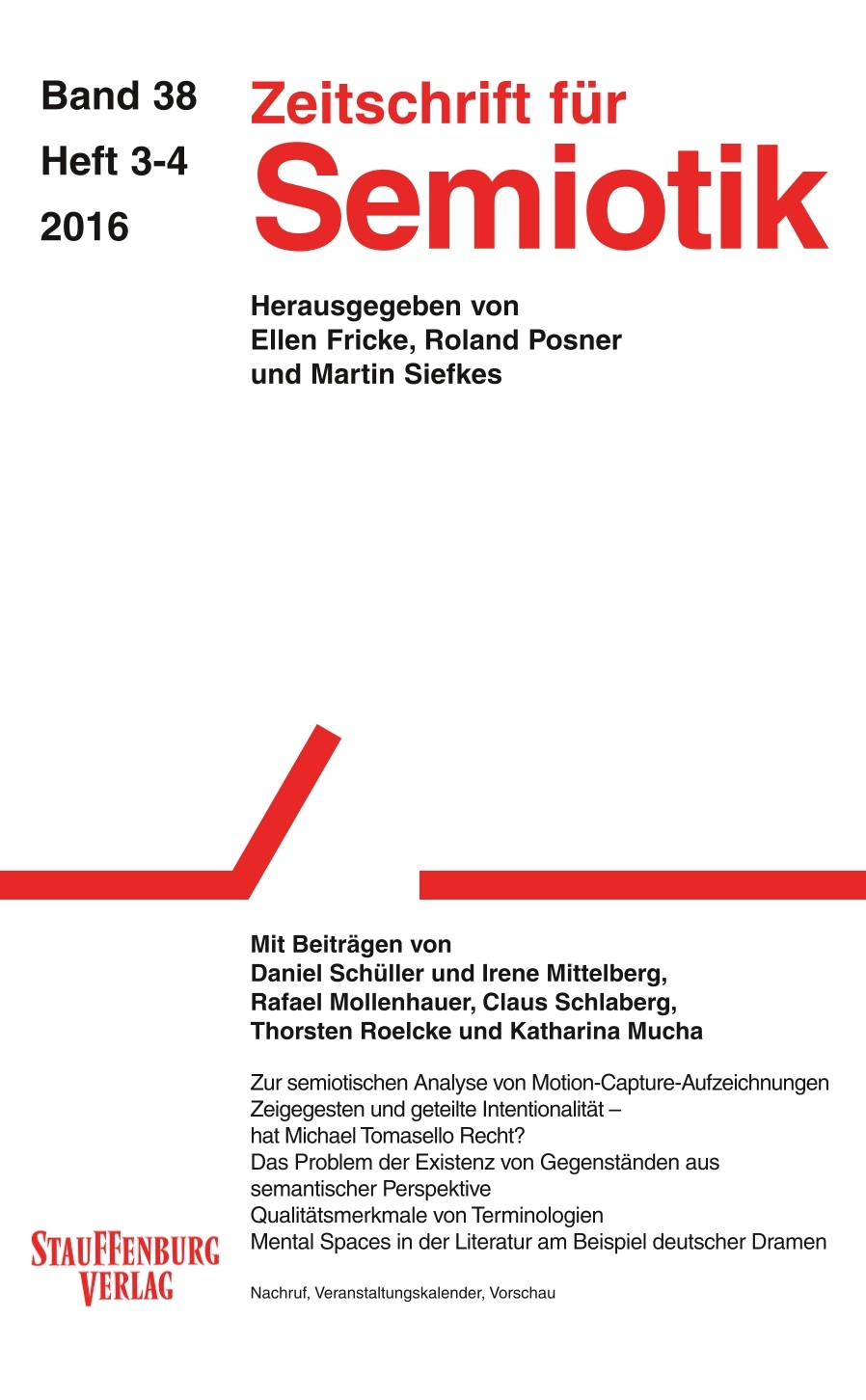Diagramme von Gesten. Eine zeichentheoretische Analyse digitaler Bewegungsspuren
DOI:
https://doi.org/10.14464/zsem.v38i3-4.635Keywords:
diagram, motion capture, index, notation, mental map, gestalt, gesture research, co-speech gesture, embodied image schema, Charles S. PeirceAbstract
Summary. This paper presents a semiotic investigation of how diagrams are produced and used in empirical, motion-capture based gesture research for the purposes of representation and analysis of co-speech gestures. First, we discuss the notion of diagram, drawing on Peircean semiotics and more recent accounts of diagrammatic thinking, and traditional ways of recording and representing co-speech gestures. We then employ analytic tools stemming from semiotic theory to a) account for the notational procedures used in motion-capture technology and b) offer a diagrammatic interpretation of the signs resulting from them. Our hypothesis is that motion-capture diagrams are products of operative diagrammatic processes and that they are comparable with empirical measurements. The “epistemic force of the trace” (Krämer 2011) consists in the iconic visualization of movement trajectories which become perceptual gestural gestalts through projecting an indexical sign onto a coordinate system that virtually structures gesture space. We further highlight diagrammatic processes underpinning co-speech gestures themselves, which may be visualized as holistic gestalts with the help of optical motion-capture technology. These cognitive-semiotic processes manifest themselves dynamically and spatially through embodied image schemas, relational representations of abstract concepts, and gestural diagrams based on mental maps (for example, when conversational partners are jointly planning a journey).
Downloads
Published
Issue
Section
License
Copyright (c) 2023 Daniel Schüller, Irene Mittelberg

This work is licensed under a Creative Commons Attribution 4.0 International License.
Copyright for articles published in this journal is retained by the authors. The content is published under a Creative Commons Licence Attribution 4.0 International (CC BY 4.0). This permits use, distribution, and reproduction in any medium, provided the original work is properly cited, and is otherwise in compliance with the licence.


